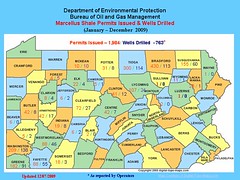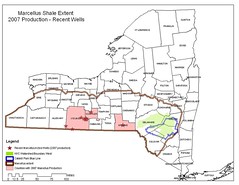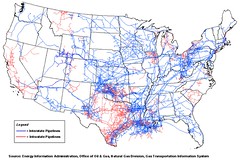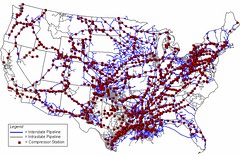In the Air
The first celebration of Earth Day, on April 22, 1970, was a raucously exuberant affair. In New York, Fifth Avenue was closed to traffic. People picnicked on the sidewalk; dead fish were dragged through midtown; and Governor Nelson Rockefeller rode a bicycle across Prospect Park. Students in Richmond, Virginia, handed out bags of dirt (to represent the "good earth"); demonstrators in Washington poured oil onto the sidewalk in front of the Interior Department (to protest recent oil spills) ... All told, some twenty million Americans took part – far more than the man who thought up the occasion, Senator Gaylord Nelson, Democrat of Wisconsin, had expected.
“That was the remarkable thing about Earth Day,” Nelson later said. “It organized itself.”
Among those who seemed unmoved was President Richard Nixon. He avoided the festivities and made no public comment on them. (One of his aides, John Whitaker, later acknowledged that the Administration had been “totally unprepared” for the wave of environmental activism “that was about to engulf us.”) Nevertheless, even Nixon seems to have got the message.
Three months afterward, he created the Environmental Protection Agency and the National Oceanic and Atmospheric Administration, and five months after that he signed the Clean Air Act. The Clean Water Act, the Pesticide Control Act, the Endangered Species Act, and the Safe Drinking Water Act all became law by the end of 1974.
Since the mid-nineteen-seventies, the nation’s environmental agenda—to the extent that it has had one—has consisted mainly of trying to defend these early achievements. This is all the more notable because of what has happened in the intervening years. At the time of the first Earth Day, the term “global warming” was barely in circulation ... and actual warming had yet to be clearly detected. Today, of course, there are thousands of scientists studying global warming, and new effects are constantly being observed. Just a few weeks ago, researchers reported that Antarctica’s Wilkins Ice Shelf had “begun to collapse because of rapid climate change.”...
To do something meaningful about global warming will require legislation even more far-reaching than the Clean Water Act and the Endangered Species Act, and recently there have been encouraging signs that Congress and the White House understand this. Late last year, Henry Waxman, of California, an outspoken advocate of action on climate change, wrested control of the House’s Energy and Commerce Committee from John Dingell, of Michigan, an outspoken advocate of delay. A few weeks ago, Waxman introduced a comprehensive energy bill, which, while flawed, at least represents a starting point. President Barack Obama, for his part, has been clear about the urgency of the problem; shortly after taking office, he observed that global warming, “if left unchecked,” could result in “irreversible catastrophe.” To guide him, he has assembled some of the most knowledgeable and thoughtful people in the nation. ...
In a move that has been widely interpreted as a prod to Congress, the E.P.A. last week designated carbon dioxide and five other greenhouse gases as pollutants. ... The designation initiates the regulation of CO2 under the Clean Air Act, a process that could eventually affect most major industries in the United States.
Still, there are plenty of reasons to wonder whether serious steps to reduce carbon emissions will be taken this year or, indeed, ever. Regulating CO2 using existing laws will be a laborious, and potentially litigious, exercise. Meanwhile, the Administration has been strangely passive about trying to shape climate legislation—one reason that the Waxman bill is likely to be further watered down. Then, there’s the question of whether even an inadequate bill has the votes to pass.
Three and a half decades ago, when the nation’s key environmental laws were approved, politicians were responding to the mood of the country. Today, the situation is largely reversed.
Polls show that voters regard the environment in general, and climate change in particular, as, at best, middling concerns. In a recent survey, the Pew Research Center asked Americans about their priorities for Congress and the new President. “Dealing with global warming” ranked at the bottom of a list of twenty choices, far below “strengthening the nation’s economy” and “reducing health-care costs,” and even below dealing with unspecified “global trade issues.” The recession seems to have dampened the nation’s enthusiasm for any measure that could affect—or, perhaps just as important, be portrayed as affecting—people’s pocketbooks.
Last month, when Gallup asked Americans whether “protection of the environment should be given priority, even at the risk of curbing economic growth,” only forty-two per cent said yes. This was the lowest proportion in the twenty-five years since the firm started asking the question.
Results like these do not make action on climate change any less imperative. But—especially since opponents can be counted on to spend tens of millions of dollars on lobbying—they do make it that much less likely.
This week, when Earth Day turns thirty-nine, the New York City Department of Parks and Recreation will plant trees. The Interior Department will host a fair in Washington’s Rawlins Park, and in Bloomington volunteers will teach sixth graders about karsts and creeks. As perhaps befits a middle-aged celebration, these are all eminently reasonable activities. But Earth Day has lost its edge and, with that, the sense that a different world is possible. Even more than in 1970, what’s needed now is an outpouring that organizes itself...



















اپلیکیشن بکس بت یک پلتفرم شرطبندی پیشرفته است که بازیهای کازینویی و پیشبینی ورزشی را به صورت حرفهای و با ضرایب بالا ارائه میدهد. این اپلیکیشن با رابط کاربری ساده و سرعت بالا، تجربهای راحت و امن را برای کاربران فراهم میکند. همچنین بکس بت با ارائه بونوسهای ویژه و واریزهای سریع، شانس برد کاربران را افزایش میدهد. این اپلیکیشن به شرطبندان حرفهای و مبتدی، امکان شرطبندی در هر زمان و مکانی را میدهد.
ReplyDelete